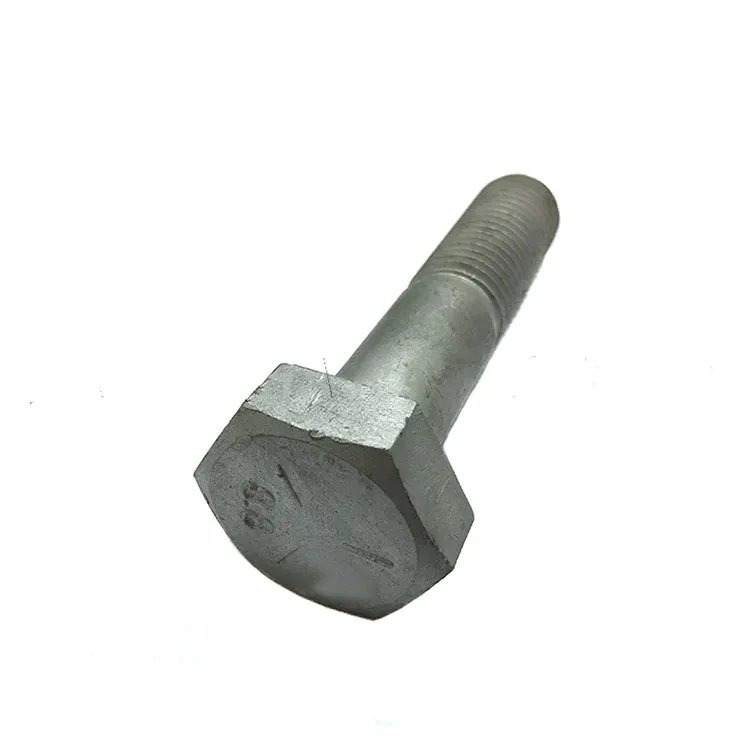What are the properties of a hex bolt?
2024-11-07
Hex bolts, also known as hex cap screws, are versatile fasteners widely used in construction, manufacturing, and automotive applications. They are identified by their six-sided hexagonal head, which allows for easy installation and removal with a wrench or socket. Here are the key properties and characteristics of hex bolts:

1. Material Composition
- Steel: Commonly made from carbon steel, alloy steel, or stainless steel, depending on strength requirements and environmental conditions.
- Stainless Steel: Offers corrosion resistance and is often used in marine or outdoor environments.
- Brass, Aluminum, and Other Alloys: Used for specific applications, though less common than steel.
2. Strength and Grade
- Grades for Steel Bolts: Hex bolts come in various grades, with higher numbers indicating higher tensile strength.
- Grade 2: General-purpose, low-to-medium strength.
- Grade 5: Medium strength, used in automotive applications.
- Grade 8: High strength, used for heavy-duty applications.
- Metric Grades: Often rated by class, such as Class 8.8, 10.9, or 12.9, with 12.9 being the strongest.
3. Corrosion Resistance
- Plain Steel: Susceptible to rust without a protective coating, generally used indoors or where corrosion resistance isn’t critical.
- Galvanized and Zinc-Plated Coatings: Provide basic corrosion protection for mild outdoor environments.
- Stainless Steel: Naturally corrosion-resistant, ideal for exposure to moisture or corrosive substances.
4. Threading Type
- Fully Threaded: Threaded from the tip up to the head, providing a strong hold but often used in applications where the full length of the bolt is needed for grip.
- Partially Threaded: Threaded only partway, with an unthreaded shank below the head, providing greater shear strength and commonly used in structural applications.
5. Size and Dimensions
- Diameter: Hex bolts are available in a range of diameters (e.g., M6, M8, M10 for metric, and 1/4", 1/2", 3/4" for imperial).
- Length: Varies depending on application requirements, from short bolts for shallow fastening to long bolts for deeper structural purposes.
- Head Width: Determined by the bolt's size, usually proportional to the diameter for optimal strength and compatibility with standard tools.
6. Mechanical Properties
- Tensile Strength: Ability to resist breaking under tension. This depends on both the bolt’s grade and material.
- Shear Strength: Resistance to shearing forces, higher in bolts with partially threaded shafts.
- Hardness: Higher grades have greater hardness, which makes them more resistant to wear but sometimes more brittle.
7. Application-Specific Features
- Hexagonal Head Design: Allows for high torque application and is easy to tighten or loosen using standard wrenches or sockets.
- Pre-Drilled Holes (Optional): Some hex bolts feature pre-drilled holes for added security, allowing for a wire or pin to secure the bolt in place.
- Self-Locking: Some hex bolts come with locking mechanisms, such as nylon inserts or flanged heads, to prevent loosening from vibrations.
8. Compatibility and Versatility
- Nuts and Washers: Often paired with hex nuts, lock nuts, or washers to improve load distribution and prevent loosening.
- Variety of Applications: Suitable for wood, metal, and other materials in structural and mechanical assemblies.
Summary
Hex bolts are known for their strength, versatility, and ease of use. Available in a variety of materials, grades, and finishes, they offer a range of options to meet specific strength, corrosion resistance, and application requirements. Whether for high-stress structural projects or simple household tasks, hex bolts provide a reliable and durable fastening solution.


